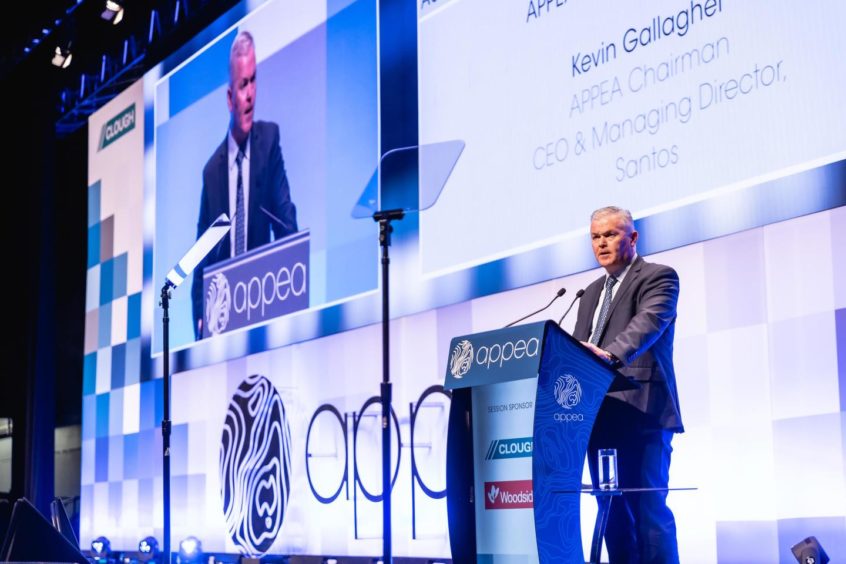
Australia’s Santos has started front-end engineering and design (FEED) work for its proposed giant carbon capture and storage (CCS) project offshore East Timor at the Bayu Undan field. Significantly, Santos aims to take a final investment decision (FID) in 2023 on the CCS project, which it claims has the potential to be the largest in the world.
“The Bayu-Undan CCS project could potentially safely and permanently store up to 10 million tonnes of carbon dioxide (CO2) per annum, equivalent to about 1.5% of Australia’s carbon emissions each year,” said Santos, which operates the Bayu-Undan offshore gas production facility in East Timor connected to its Darwin liquefied natural gas (LNG) export plant in Australia.
“The project has the potential to be the largest CCS project in the world and one of the many that will be critical to help the world meet its climate goals,” added Santos in a statement today.
The Bayu-Undan FEED work will include engineering and design for additional CO2 processing capacity at Darwin LNG plus repurposing of the Bayu-Undan facilities for carbon sequestration operations after gas production ceases.
Santos said it is working closely with East Timor’s regulator, ANPM, towards the necessary agreements and regulatory framework that will be required for the Bayu-Undan CCS project. The project will also need agreements between the governments of East Timor, also known as Timor-Leste, and Australia, and some Australian regulatory arrangements.
“Located in Timor-Leste with potential CO2 sources from Australian gas projects and other industries in the Northern Territory, Bayu-Undan CCS could be the start of a valuable new carbon services industry for Timor-Leste,” said Santos chief executive Kevin Gallagher.
“Entry into the FEED phase has strong support from our five joint venture partners headquartered in Japan, Korea and Italy. And last month, a meeting of the Timor-Leste and Australian Prime Ministers included a commitment by Australia to establish an LNG Partnership Fund to deepen links between Australia and Timor-Leste in gas development and trade, including in the use of carbon capture and storage,” added Gallagher.
The Australia government said in a statement released 17 February that the Prime Ministers discussed the important contribution the exploitation of gas resources in the Timor Sea makes to both countries’ economic prosperity, and the close cooperation between Australia and Timor-Leste under the Maritime Boundaries Treaty, which entered into force in 2019. Australian Prime Minister Scott Morrison committed to establish an LNG Partnership Fund to deepen links between Australia and Timor-Leste in gas development and trade, including in the use of carbon capture and storage (CCS).
With about 80% of the world’s energy still coming from hydrocarbons, including natural gas, and new supply investment still required to meet the world’s ongoing demand for these products, it is essential that the industry decarbonises production, noted Santos. “CCS offers a large-scale, low-cost and permanent way to progressively make these fuels cleaner. CCS will also enable new clean fuels industries such as hydrogen which will dramatically reduce not only Scope 1 and 2 emissions, but Scope 3 emissions as well,” added the company.
Santos has a 43.4% operated interest in Bayu-Undan and Darwin LNG. The remaining interest is held by SK E&S (25%), INPEX (11.4%), ENI (11%), JERA (6.1%) and Tokyo Gas (3.1%).
Santos’ approved Barossa project is one of several potential CO2 sources for Bayu-Undan CCS, but importantly this project offers a region wide carbon solution, reckons Santos. Santos had proposed to use the Bayu Undan reservoir for capturing and storing CO2 from Barossa, which it is developing off north-western Australia. The $3.6 billion Barossa projects’ gas has a very high CO2 content compared to other projects in the region. Some critics claim it is one of the dirtiest gas developments proposed globally.
https://www.energyvoice.com/oilandgas/asia/388407/critics-say-santos-barossa-lng-should-be-halted-until-ccs-scheme-proven/
Still, there are other competing CCS projects proposed offshore Northern Australia. Last month, Inpex announced its proposed CCS hub near Darwin, that is estimated to cost 100 billion yen ($868 million) and could be expanded from an initial 2 million tons per year to capture 7 million tons of CO2 per year. This would put it on par with the world’s largest CCS hub operated by ExxonMobil in the US. Inpex’s proposed CCS project also lies within Australian waters, which removes complications over cross border regulatory frameworks and agreements that will be required for Santos’ Bayu Undan CCS hub plan.
https://www.energyvoice.com/renewables-energy-transition/386625/inpex-set-to-build-giant-carbon-capture-hub-in-australia/
Santos said that “a final investment decision (FID) on Bayu-Undan CCS is targeted for 2023, subject to relevant regulatory frameworks and agreements being in place in both Timor-Leste and Australia. Non-government organisations in East Timor have raised concerns about how quickly Santos CCS project is progressing, urging the government in Dili to fully analyse the implications of such a development.
https://www.energyvoice.com/oilandgas/asia/387738/east-timor-ngo-hits-out-at-santos-carbon-storage-plans-for-barossa-lng/
The International Energy Agency (IEA) Roadmap to Net Zero by 2050 envisages carbon capture, utilisation and storage (CCUS) expanding to 7.6 billion tonnes of CO2 per year by 2050 from around 40 million tonnes per year today.
